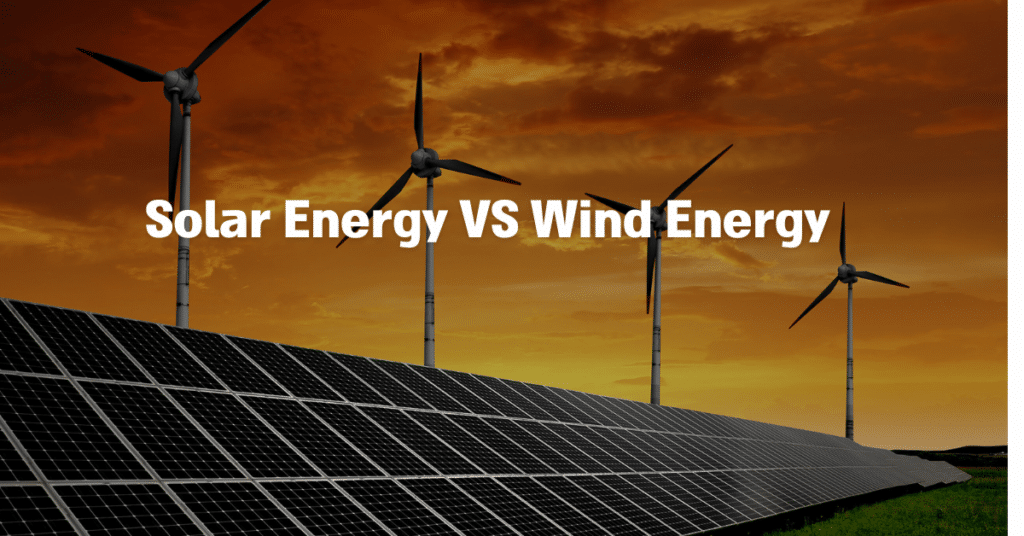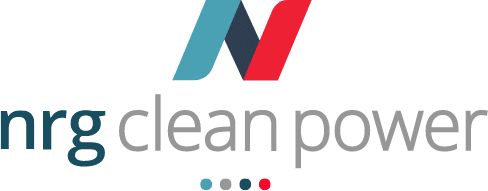
Solar installations achieve 5.6 gigawatts capacity growth in early 2023, while wind turbines generate enough electricity to power 9% of American homes. These clean energy sources are reshaping how the United States produces power.
But which is better?
We will compare the two energy generation technologies on cost, efficiency, applicability and environmental impact.
Wind and solar technologies demonstrate remarkable cost-efficiency improvements. A residential solar system now costs as much as a mid-range kitchen remodel [$2.50 per watt], while wind power requires even less investment [$1.50 per watt].
Over 4 million American families now power their homes with rooftop solar, while massive wind farms harness energy across rural landscapes and ocean waters.
On environmental impact, wind turbines produce less carbon dioxide than brewing a cup of coffee [4.64 grams per kilowatt-hour], while solar arrays emit about as much as driving a car one city block [70 grams].
Let’s look at these comparisons in greater detail.
What is Cheaper Solar or Wind Power?
The cost of renewable energy systems varies significantly by size and type. A home solar system producing 3.5 kilowatts costs $8,500 [$7,026]. Home wind turbines would cost more, ranging from $11,000 to $36,000 [$9,000 to £30,000].
These price differences come from how complex each system is to build and install. For large scale systems, wind power breaks even and produces power cheaper than an equivalent solar system.
Big wind farms make cheaper power than large solar installations. Wind farms generate more power in less space and need less maintenance for each megawatt they produce.
Maintenance Cost of Wind and Soar Systems
Wind turbine upkeep costs $3,000 to $5,000 [$2,500 to £4,200] yearly. Solar systems only need $75 to $150 [$62 to £125] for insurance.
Solar panels need simple maintenance while wind turbines require more care. Solar systems need yearly cleaning and safety checks. Wind turbines need service visits 2-3 times each year to oil moving parts and check electrical connections.
Both systems get cheaper to run over time. Solar maintenance costs dropped from $30/kW/year to $18/kW/year [$25 to £15/kW/year] between 2011 and 2017. Wind turbine costs fell from $35/kW/year to $17/kW/year [$29 to £14/kW/year] from 2007 to 2019.
How Long Until Solar or Wind Systems Pay for Themselves (ROI)?
Wind power systems achieve faster return on investment in commercial installations, while solar systems have better ROI for residential applications. Residential solar installations pay for themselves in energy savings in about 7.5 years. Small wind turbines require 6 to 30 years for investment recovery.
The Levelized Cost of Energy (LCOE) calculates total power generation expenses across a system’s operational lifespan. This metric combines installation costs, maintenance expenses, and energy production values. Wind power LCOE decreased from $135 per megawatt-hour to $43 [$112/MWh to $36/MWh] between 2009 and 2018. Solar LCOE matched this reduction, dropping from $359 to $43 per megawatt-hour [$298 to $36/MWh].
What Makes Wind Energy More Efficient Than Solar Power?
Wind turbines transform 60% to 90% of wind energy into electricity. Solar photovoltaic systems convert 20% to 25% of solar radiation into electrical power. The efficiency differential stems from fundamental differences in energy harvesting mechanisms and conversion technologies.
Solar Efficiency Improvements with Technological Advancement
Solar conversion technology demonstrates continuous efficiency improvements. First-generation photovoltaic cells achieved 10% conversion efficiency. Contemporary commercial solar panels attain 22% energy conversion rates. High-efficiency photovoltaic systems reach 25% conversion efficiency.
Solar power efficiency advances through three primary technological enhancements:
- Bifacial panels: Next-generation collectors capture 30% more energy by utilizing both direct and reflected sunlight
- Perovskite materials: Advanced solar cells achieve 44% higher conversion rates than traditional silicon-based technology
- AI optimization systems: Smart controllers increase daily power output by 25% through real-time angle adjustment
These technological improvements transform solar energy collection efficiency. Bifacial panels demonstrate superior performance in snow environments where ground reflection increases total energy capture.
Perovskite materials reduce manufacturing costs by 60% while improving energy conversion rates. Smart systems maintain peak generation efficiency through continuous environmental monitoring.
Impact of Geography on Wind and Solar Efficiency
Location-specific environmental factors determine renewable energy system performance. Solar photovoltaic installations require:
- Latitude optimization: Geographic position affects solar radiation angle by 40% annually
- Atmospheric clarity: Cloud cover reduces energy generation capacity by 25%
- Seasonal radiation: Summer sunlight increases power output by 60%
Wind turbine systems demand sustained wind velocities exceeding 9 miles per hour [14.5 kilometers per hour]. Optimal wind generation locations include:
- Plains topography: Flat terrain increases turbine efficiency by 35%
- Coastal zones: Ocean breezes provide 45% more consistent airflow
- Mountain corridors: Elevation changes accelerate wind velocity by 50%
Multi-technology deployment strategies optimize power generation capacity. Geographic regions supporting both wind and solar installations achieve 85% higher reliability rates than single-technology implementations.
Which is More Space Efficient, Solar Power or Wind System?
Wind farms use less direct land than solar farms. Wind turbines need 1.3 square meters per kilowatt [14 square feet/kW]. Solar panels require 21.2 square meters per kilowatt [228 square feet/kW]. These numbers help power companies plan new clean energy projects.
Both wind and solar installations share land with farming. Wind turbines keep 95% of farm land available for crops. Solar panels work above farm fields in systems called agrivoltaics. These combined solar-farming setups make land 84% more productive. Solar panels also work on building roofs, which saves open land.
The National Renewable Energy Laboratory predicts clean energy will need specific amounts of land by 2035. Land installations will use 14.3 million acres – about the size of West Virginia. Offshore wind farms will need 2.2 million acres of ocean space.
Wind farms space their turbines far apart for best performance. Solar farms cover their whole site with panels. Both types of power plants can work with farming. Smart planning helps these power systems share land with other uses.
How Does Solar Power Compare to Wind Systems on Environmental Impact?
Renewable energy technologies like solar and wind power are transforming how we generate electricity. These clean energy sources offer powerful alternatives to fossil fuels, each with unique environmental characteristics that make them crucial in our fight against climate change.
What Produces More Carbon, Solar or Wind Power?
Wind energy is cleaner than solar energy. That said, both Solar and wind energy systems create dramatically fewer carbon emissions compared to traditional fossil fuel power plants.
Wind turbines generate approximately 4-34 grams of CO2 per kilowatt-hour (kWh), while solar panels produce about 6-50 grams of CO2 per kWh. In contrast, coal-powered plants spew around 1,000 grams of CO2 per kWh – that’s nearly 20 to 250 times more pollution!
How do solar and Wind Systems Impact Wildlife?
Both solar and wind technologies interact with local ecosystems in complex ways:
- Wind turbines can pose collision risks for birds and bats
- Solar farms might cause habitat loss, especially in delicate desert environments
Wind turbines generate substantial direct mortality for avian and chiropteran populations. In the United States, wind energy infrastructure causes:
- Bird fatalities ranging from 140,000 to 500,000 annually
- Bat mortality is estimated to be between 200,000 to 800,000 per year across North America
What Environmental Benefits Do Solar and Wind Energy Provide?
While solar and wind energy systems aren’t perfect, they represent a crucial step toward sustainable, clean energy production. Their environmental impact is substantially lower than fossil fuel alternatives, making them key players in our transition to a greener future.
Despite their challenges, these technologies offer significant environmental advantages:
- In 2022, global solar energy production exceeded 1,300 terawatt-hours (TWh)
- Wind energy prevented CO2 emissions equivalent to 42 million cars in 2019
How Much Do Renewables Help Fight Climate Change?
Renewable energy systems reduce carbon emissions through efficient power generation. Wind turbines release 4.64 grams of carbon dioxide per kilowatt-hour [CO2/kWh]. Solar arrays emit 70 grams CO2/kWh. These emission rates demonstrate 95% reduction compared to fossil fuel technology.
Power generation emissions determine climate impact metrics. Wind energy shows superior carbon reduction rates. Solar technology maintains competitive emission levels. Both systems contribute to climate change mitigation through clean power production.
Solar or Wind: Which Way for Your Home
Solar energy is generally the better choice for most homes compared to wind energy. Here are the key reasons why:
- Practicality: Solar panels are more practical for residential use, as they can be easily installed on rooftops and require minimal maintenance. Wind turbines need ample open space and are less developed for residential applications.
- Cost: The average 7.2-kilowatt solar installation costs about $21,600 before incentives, with prices continuing to decrease. Residential wind turbines are typically more expensive and have higher maintenance costs.
- Energy Production: While wind turbines can convert up to 60% of wind energy into electricity compared to solar panels’ 20-22% efficiency, solar is more consistent in residential settings. A typical home needs about 16 solar panels to meet its energy needs.
- Space Efficiency: Solar panels require about 21.2 square meters per kilowatt, which fits well on most rooftops. Wind turbines need more open space to operate efficiently.
- Environmental Impact: Both technologies have low environmental impacts, but wind turbines can pose risks to birds and bats, while solar panels have minimal wildlife impact in residential settings.
- Reliability: Solar energy is more predictable for homes, generating power during daylight hours. Wind energy is more intermittent and depends heavily on local wind conditions.
- Property Value: Solar panels typically increase home value, while wind turbines may not have the same positive effect in residential areas.
For most homeowners, solar panels offer a more practical, cost-effective, and reliable renewable energy solution compared to wind turbine

